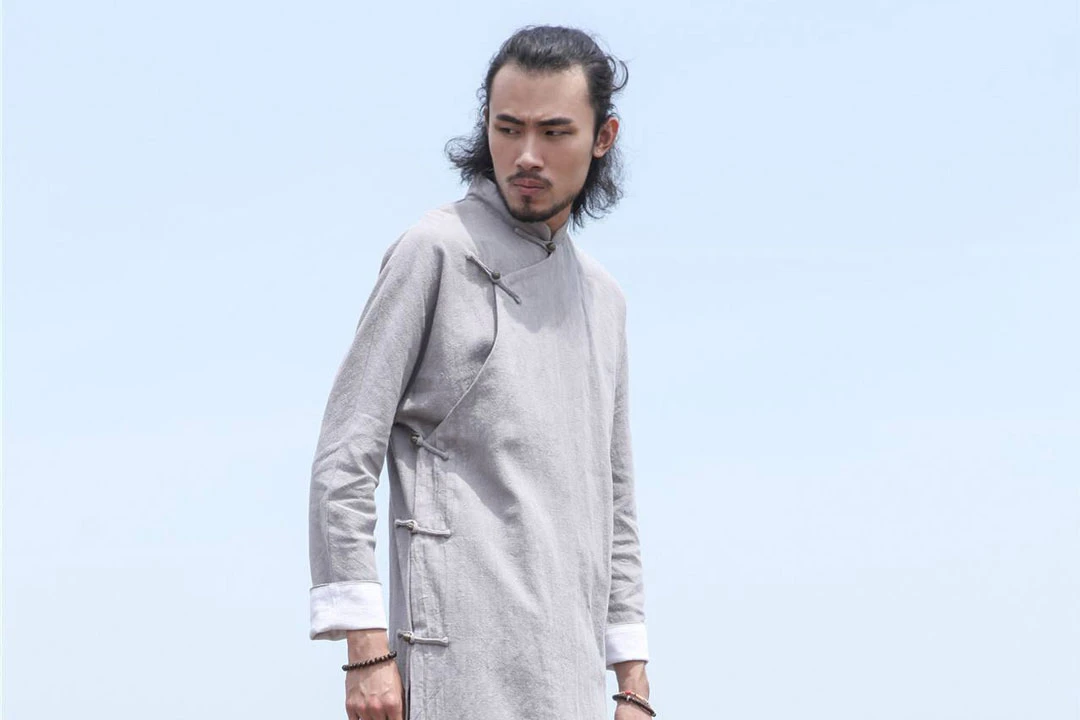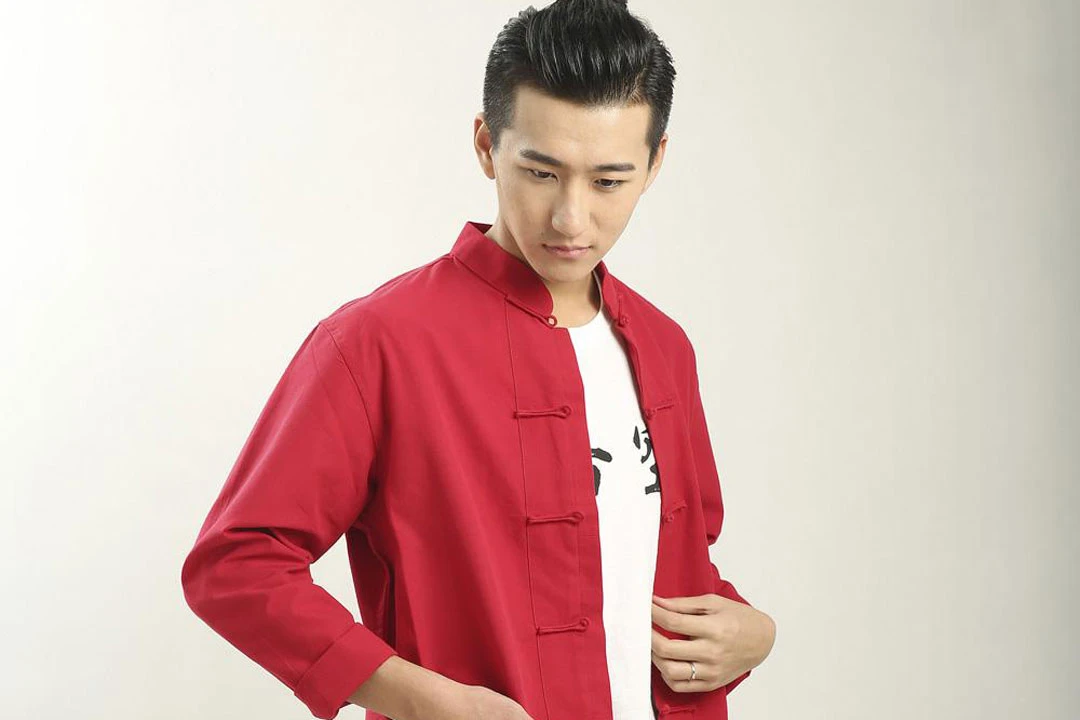The Daoist style hanfu robe, an integral part of Ming Dynasty Hanfu, holds a unique position in the realm of traditional Chinese attire. Not only was it a customary garment for men during their leisure hours, but it also found its place as an undergarment or even in the wardrobe of common men on their wedding days. The Daoist Robe, characterized by its straight collar, large lapels, side slits, and concealed pleats, secured with a tie, often adorned with a white or plain protective collar, reflects the distinctive style of the Ming era.
1. The Hanfu Robe: A Blend of Tradition and Practicality
Originating as a casual garment for daily wear, the Daoist Robe evolved into a symbol of refinement and sophistication. Contrary to its association with Daoist practitioners in modern perception, it started as a popular choice among men of various social strata, not limited to scholars or as ceremonial attire.
The Daoist Robe’s distinctive features, such as its broad sleeves and the incorporation of concealed pleats, provided both comfort and convenience. The clever design allowed for dynamic movement without revealing the inner layers of clothing. This characteristic resonates with the modest and reserved nature ingrained in Chinese culture.
2. Colors and Fabrics
In Ming Dynasty, the choice of colors for clothing was regulated by explicit guidelines. Red and yellow were reserved as imperial colors, while black, dark blue, and true green were prohibited. The Daoist Robe, as described in “Zhu Shunshui Talks About Silk,” had its own distinct color palette. It avoided the use of black, dark blue, and true green, opting instead for colors like moon white, emerald blue, sky blue, ivory, pine flower, soy sauce, lamb wool, and spring onion white.
Moreover, Daoist Robes embraced a variety of fabrics, including flower-patterned gauze, plain gauze, damask, satin, machine-woven gauze, silk, machine-spun yarn, gauze with holes, autumn crepe, and water-twist crepe. This diverse selection allowed for both aesthetic appeal and practicality in different weather conditions.
3. Ming Dynasty Daoist Hanfu Fashion
Despite its early association with commoners, the Daoist Robe gained immense popularity among scholars and literati during the later stages of the Ming Dynasty. Its wide sleeves and flowing design appealed to the sensibilities of the literati, embodying an aesthetic that was both graceful and timeless.
The Daoist Robe’s versatility was further highlighted by its adoption in various contexts. Whether worn as an undergarment, an outer layer, or even as wedding attire, its adaptability and distinctive style made it a coveted choice across different social occasions.
The Daoist Robe’s cultural significance goes beyond its aesthetic appeal. In Ming society, it became a symbol of the literati class, evoking images of refined scholars and gentlemen. Literary works of the time, such as “The Romantic Fate of the World,” provide glimpses into the cultural importance of the Daoist Robe.
In wedding ceremonies, Daoist Robes played a role in traditional customs, as highlighted in “The Romantic Fate of the World” when it describes the groom, Yanzheng, wearing a bright blue Daoist Robe for the auspicious occasion. This reflects the robe’s role not only as a fashionable choice but also as an attire carrying symbolic significance in life’s major milestones.
4. Male Robe Styles
The Ming Dynasty witnessed a rich variety in male hanfu, catering to different occasions, social statuses, and seasons. The general male populace commonly adorned headwear, Daoist Robes, straight garments, fitted garments, pleated garments, and armored vests.
Scholars, in particular, favored round-collared wide-sleeved robes, characterized by wide sleeves and dark-colored trims. Official attire, identified as cloud-patterned round-collared robes made of gauze, included an additional outer coat made of cloud-patterned silk. Emperors complemented their outfits with large red shoes, creating a distinguished and regal ensemble.
Intricately detailed by Ye Mengzhu in her work “Reading the World Compilation,” the Daoist Robe underwent variations in length and sleeve size, creating a captivating visual spectrum. From shorter lengths to longer ones, with sleeves ranging from a mere foot to extending up to three feet, the Daoist Robe boasted versatility in style, adapting to the preferences of the wearer.
Besides the Daoist Robe, two other prevalent styles during the Ming Dynasty were the “Yisa” and “Tie li.” The “Yisa” featured a front section with different cuts, and the back section was continuous, creating a pleated effect below the waist. “Tie li,” on the other hand, was crafted with a front section divided into two parts, creating a visual separation.
These styles, including the Daoist Robe, exemplify the diversity and adaptability of Ming-era fashion, catering to the preferences and lifestyles of individuals from various walks of life.
Conclusion
In conclusion, the Daoist Robe stands as a testament to the dynamism and sophistication of Ming Dynasty fashion. From its humble beginnings as casual wear for the common man, it ascended to become a symbol of elegance and cultural identity for scholars and literati. The Daoist Robe’s enduring legacy transcends time, reminding us of the rich tapestry of Chinese heritage woven into the fabric of its traditional attire. As we delve into the nuances of Ming Dynasty fashion, the Daoist Robe emerges as a timeless masterpiece, reflecting the artistry, practicality, and cultural richness of an era long past.


